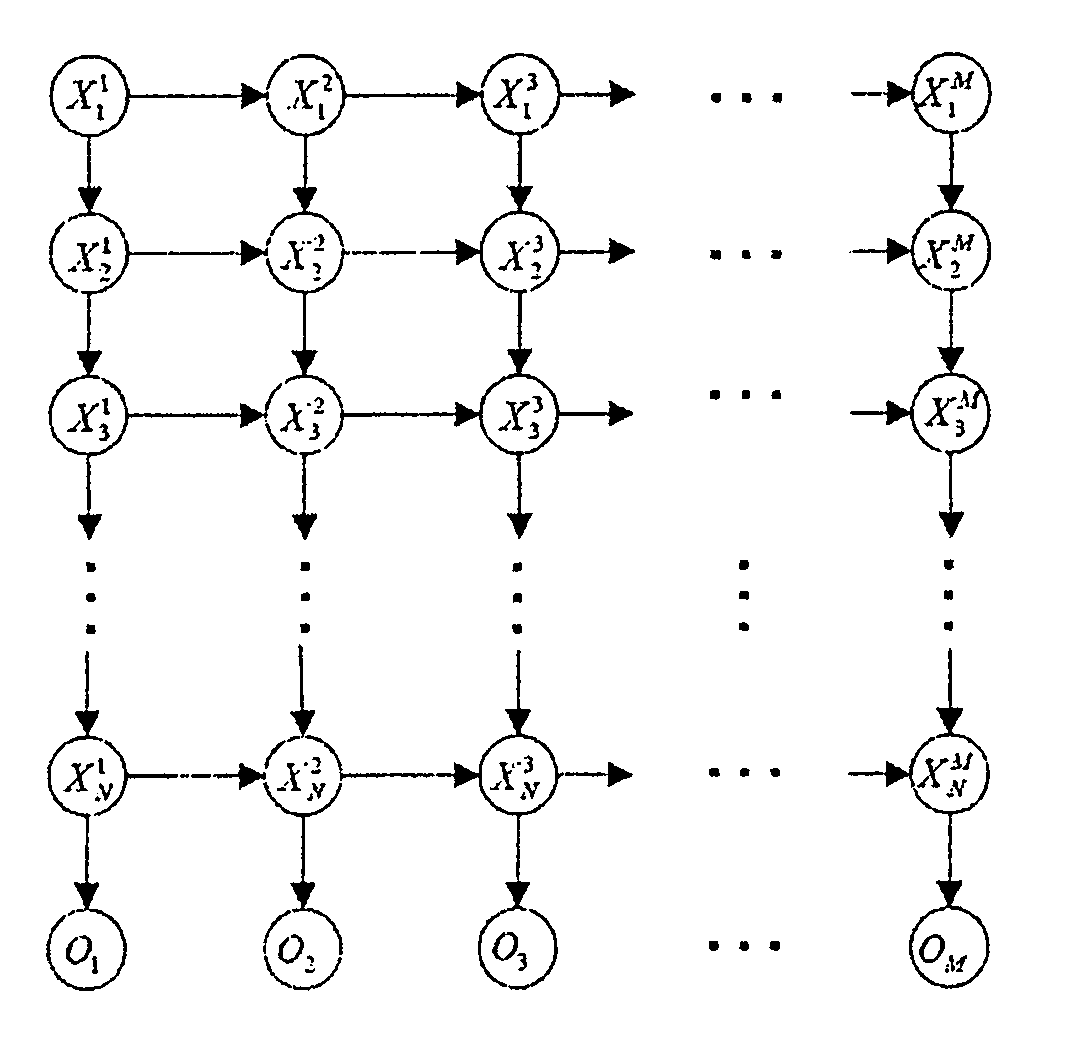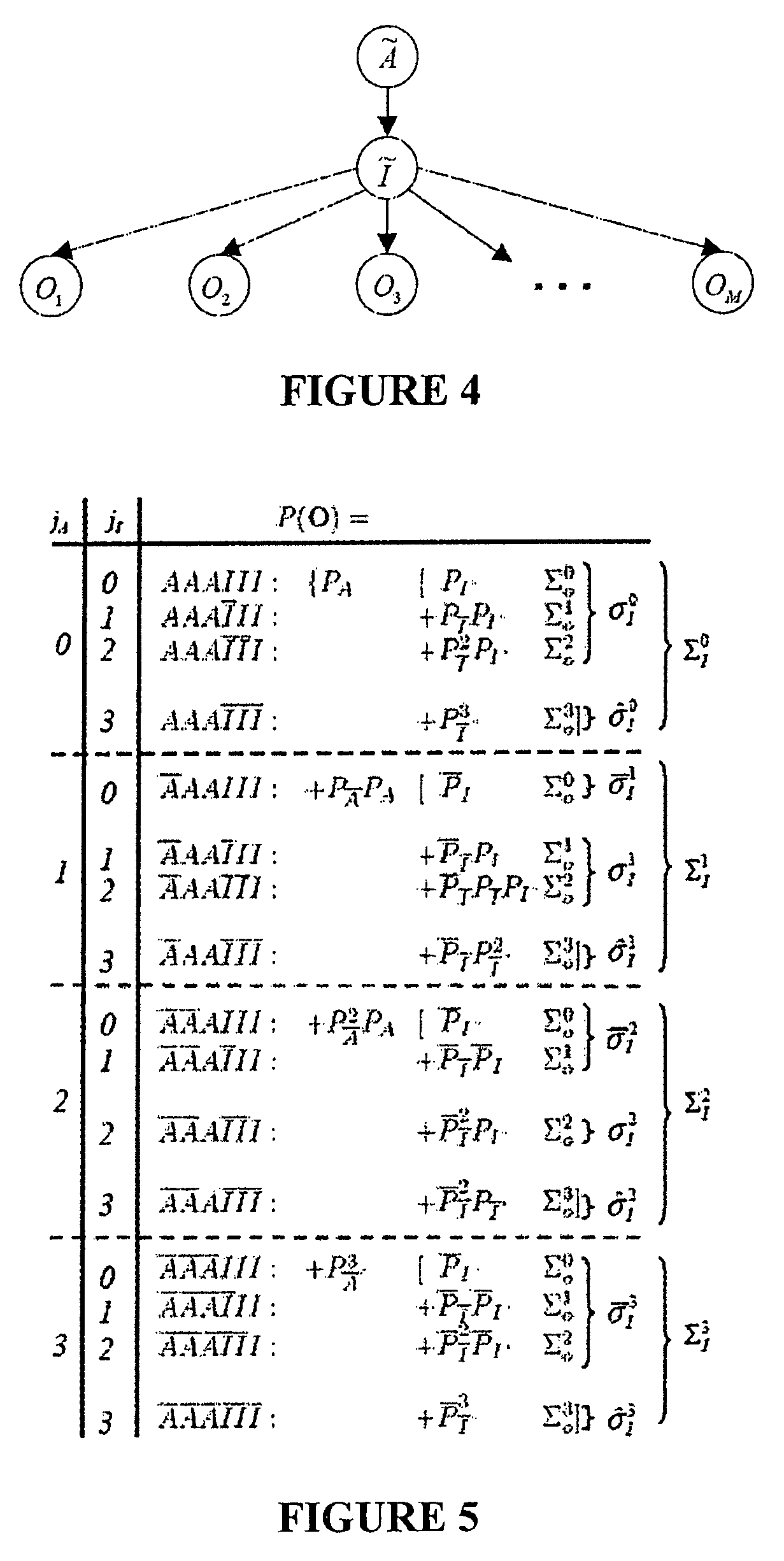Detection of epidemic outbreaks with Persistent Causal-Chain Dynamic Bayesian Networks
a dynamic bayesian network and epidemic outbreak technology, applied in the field of epidemic outbreak detection, can solve the problems of inability to solve in real time, inability to give exact solutions, and intractable exponential approach
- Summary
- Abstract
- Description
- Claims
- Application Information
AI Technical Summary
Benefits of technology
Problems solved by technology
Method used
Image
Examples
example
[0102]The empirical setup for this model includes a system of noisy local detectors (LDs), which are noisy observable detectors sitting on the end-hosts. The LDs scan outgoing packets and count the number of UDP packets to unique destination IPs, itemized by source and destination port. The LDs may also scan memory used, CPU usage, and the like. PCCDBN inference was tested on five weeks of network traffic data for 37 hosts within a corporate enterprise network. In experiments where more than 37 hosts were used, the data was bootstrapped by uniformly-at-random selecting a starting-point for each virtual host at one of the original 37 host's data stream (original host again chosen uniformly-at-random).
[0103]FIG. 7 shows a graph detailing noisy observations of outgoing packets by the LDs aggregated over all machines for all five weeks. The LD was operated at a low threshold of 4 connections per 50 second intervals (shown as the vertical line in the figure). Thus, if the count is 4 or g...
PUM
 Login to View More
Login to View More Abstract
Description
Claims
Application Information
 Login to View More
Login to View More - R&D
- Intellectual Property
- Life Sciences
- Materials
- Tech Scout
- Unparalleled Data Quality
- Higher Quality Content
- 60% Fewer Hallucinations
Browse by: Latest US Patents, China's latest patents, Technical Efficacy Thesaurus, Application Domain, Technology Topic, Popular Technical Reports.
© 2025 PatSnap. All rights reserved.Legal|Privacy policy|Modern Slavery Act Transparency Statement|Sitemap|About US| Contact US: help@patsnap.com



